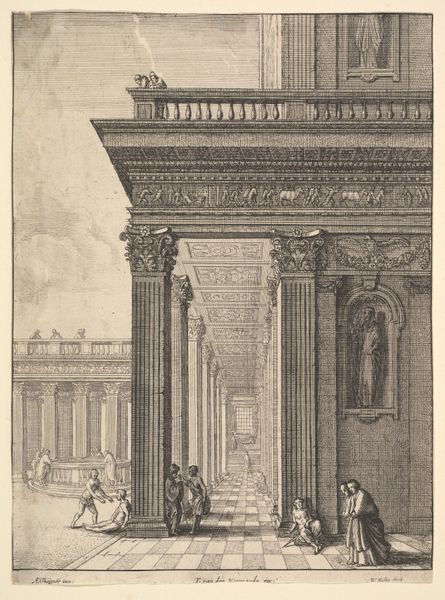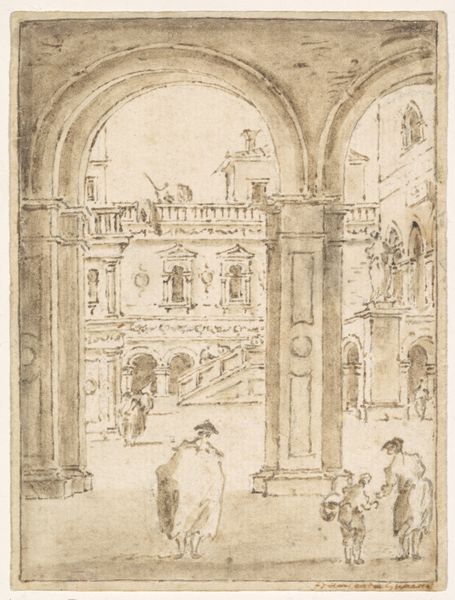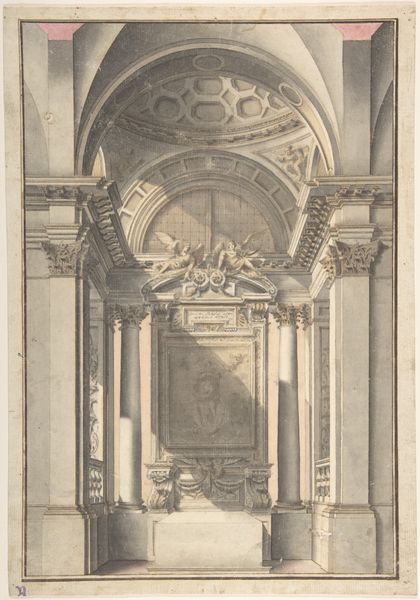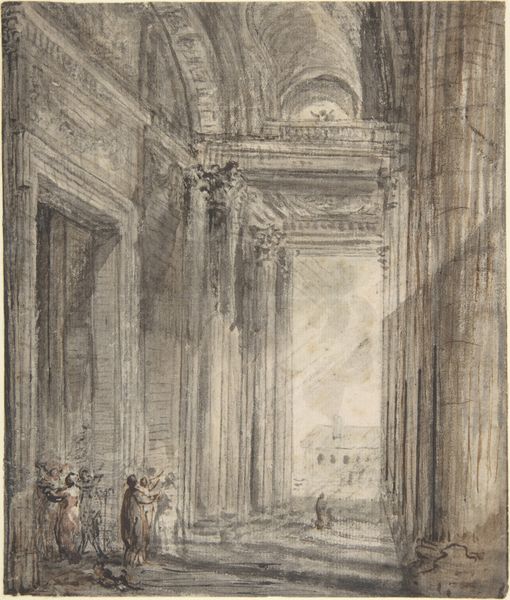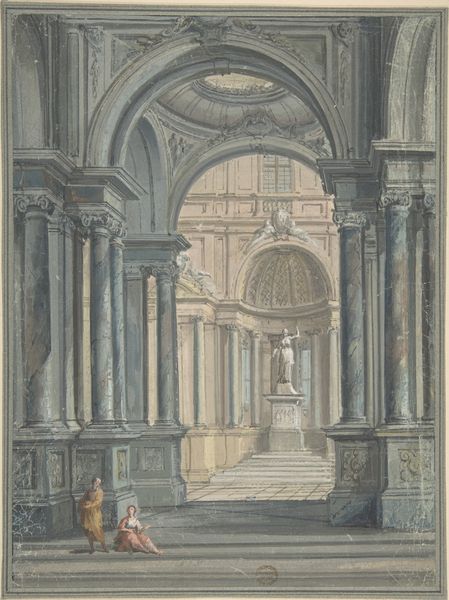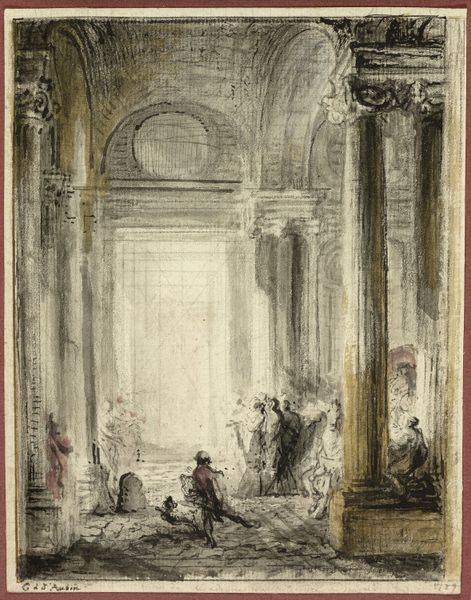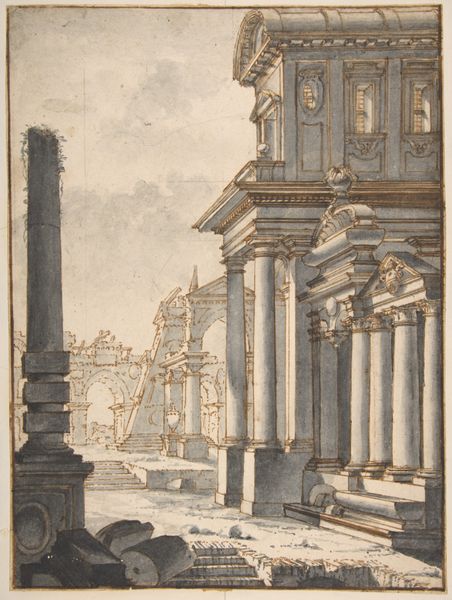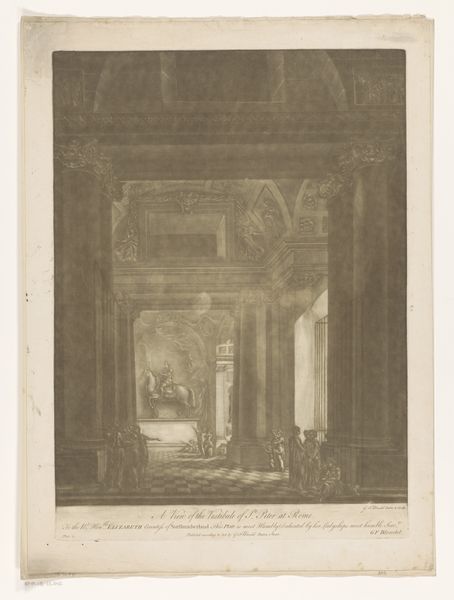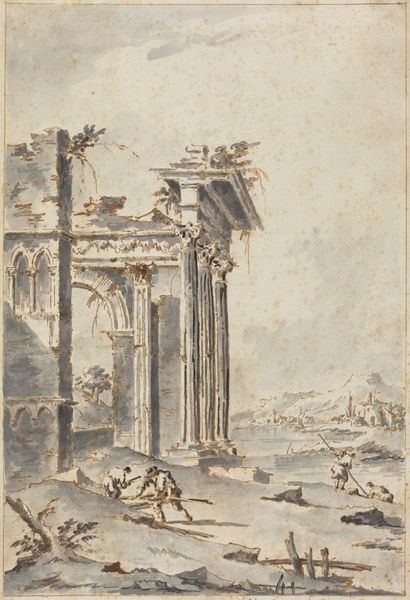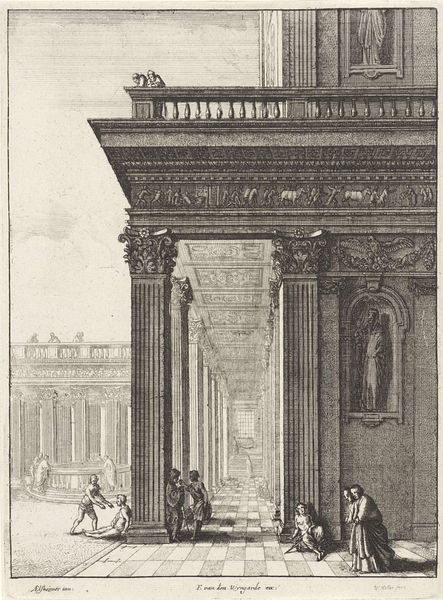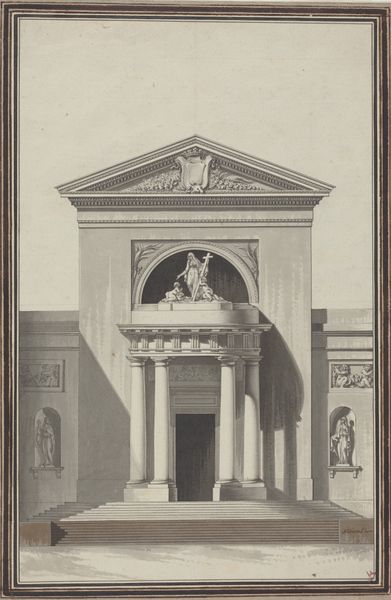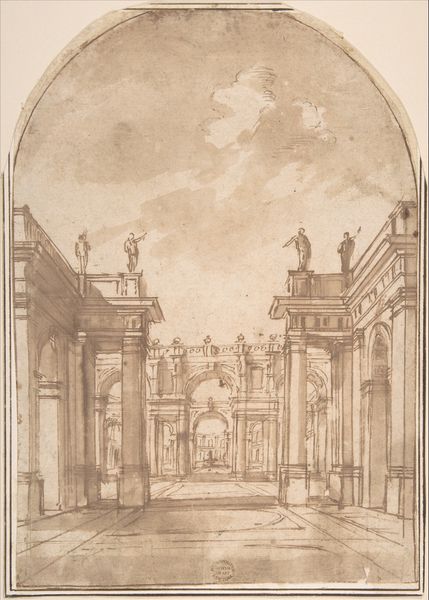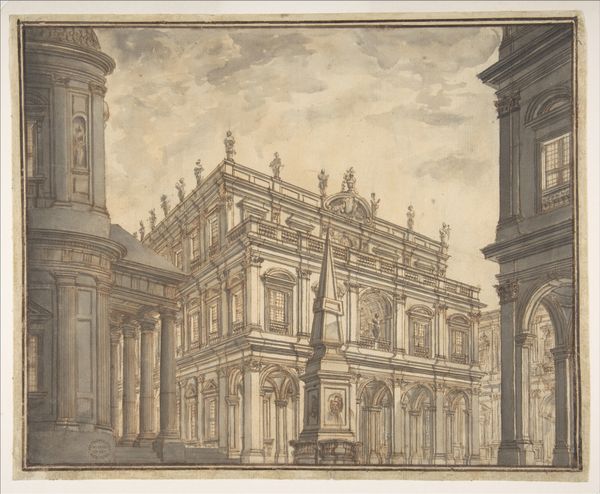
A Temple in a Courtyard (Pool of Bethesda) 1590 - 1610
0:00
0:00
drawing, tempera, print, paper, ink
#
drawing
#
tempera
# print
#
landscape
#
perspective
#
paper
#
ink
#
cityscape
#
history-painting
#
italian-renaissance
Dimensions: 8 1/16 x 6 9/16 in. (20.5 x 16.6 cm)
Copyright: Public Domain
Curator: Adam Elsheimer's "A Temple in a Courtyard (Pool of Bethesda)", likely created between 1590 and 1610, presents us with a fascinating glimpse into Renaissance architectural vision. The drawing, crafted with ink, tempera, and possibly some printmaking techniques on paper, is currently housed at the Metropolitan Museum of Art. Editor: Immediately striking is the almost melancholic atmosphere, created through the muted palette and the strong diagonal lines emphasizing the building's imposing scale. The repetition of the columns is masterful, creating a dizzying, dreamlike perspective. Curator: That architectural detail is significant. Elsheimer, working in Rome, was deeply engaged with representing space and structure, echoing a broader interest among artists and patrons in ancient Roman design. This wasn’t merely about aesthetics; it was about linking the present back to a perceived golden age, lending authority to contemporary society. Editor: I see what you mean. The rigid geometry contrasted with the small figures clustered around the pool creates a compelling tension. The play of light and shadow within the colonnade emphasizes depth, drawing the eye into the picture. Curator: Exactly. These are not mere background figures. The Pool of Bethesda itself refers to a biblical narrative about healing. So Elsheimer intertwines architectural grandeur with themes of human suffering and potential salvation, speaking to the church's role in caring for its populace and the dynamics of divine intervention in everyday life. Editor: So, beyond the immediate architectural subject matter, this work hints at complex societal and religious structures and Elsheimer used compositional tools such as orthogonal and contrast in scale to communicate that information effectively. Curator: Precisely! The composition isn't merely beautiful, it’s a statement about the structures of power and belief that defined the era. Elsheimer gives tangible form to some important cultural currents. Editor: Ultimately, Elsheimer leaves us with a drawing that asks us to reflect both on beauty and meaning, where one illuminates the other.
Comments
No comments
Be the first to comment and join the conversation on the ultimate creative platform.
